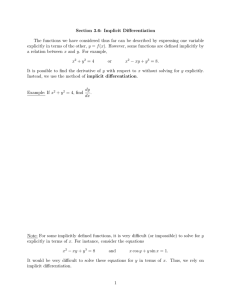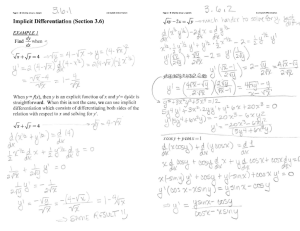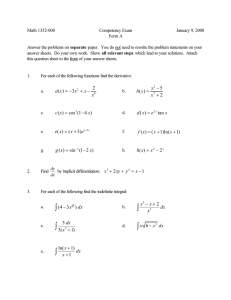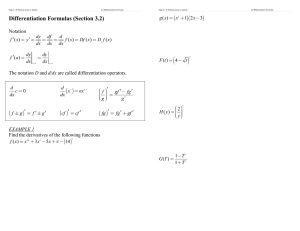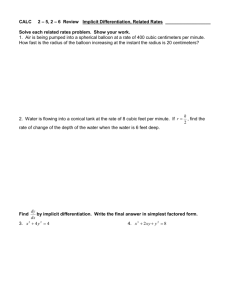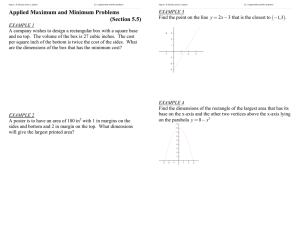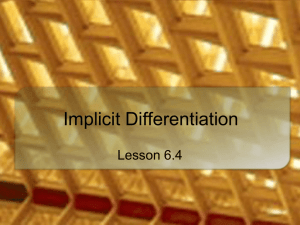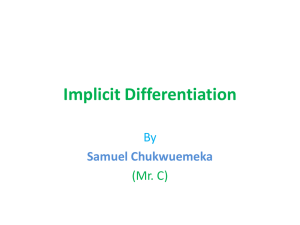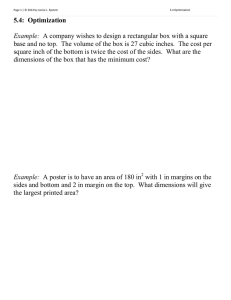Document 10413710
advertisement
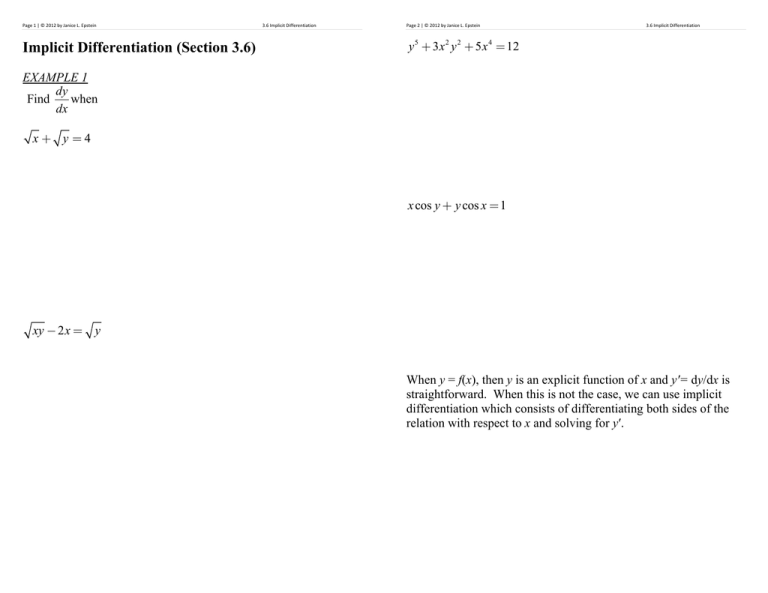
Page 1 | © 2012 by Janice L. Epstein 3.6 Implicit Differentiation Page 2 | © 2012 by Janice L. Epstein 3.6 Implicit Differentiation Implicit Differentiation (Section 3.6) y 5 + 3 x 2 y 2 + 5 x 4 = 12 EXAMPLE 1 dy Find when dx x+ y =4 x cos y + y cos x = 1 xy - 2 x = y When y = f(x), then y is an explicit function of x and y′= dy/dx is straightforward. When this is not the case, we can use implicit differentiation which consists of differentiating both sides of the relation with respect to x and solving for y′. Page 3 | © 2012 by Janice L. Epstein 3.6 Implicit Differentiation Page 4 | © 2012 by Janice L. Epstein 3.6 Implicit Differentiation EXAMPLE 2 Regard y as the independent variable and x as the dependent variable and find dx/dy for EXAMPLE 4 2 If [ g ( x)] +12 x = x 2 g ( x) and g (3) = 4, find g ¢(3). ( x2 + y2 ) 2 = ax 2 y Two curves are called orthogonal if at each point of intersection their tangent lines are perpendicular. Two families of curves are orthogonal trajectories of each other if every curve in one family is orthogonal to every curve in the other family. EXAMPLE 3 Find an equation of the tangent line to the curve at the given point. x 2/3 +y 2/3 ( EXAMPLE 5 Show that the given curves are orthogonal x 2 - y 2 = 5, 4 x 2 + 9 y 2 = 72 5 4 ) = 4 at -3 3,1 3 2 1 8 0 -5 -4 -3 -2 -1 0 -1 6 -2 4 -3 2 -4 0 -8 -6 -4 -2 0 -2 -4 -6 -8 2 4 6 8 -5 1 2 3 4 5 Page 5 | © 2012 by Janice L. Epstein 3.6 Implicit Differentiation EXAMPLE 6 Show that the given families of curves are orthogonal trajectories of each other. Sketch. y = ax 3 , x 2 + 3 y 2 = b 5 4 3 2 1 -4 -3 -2 -1 1 -1 -2 -3 -4 -5 2 3 4
